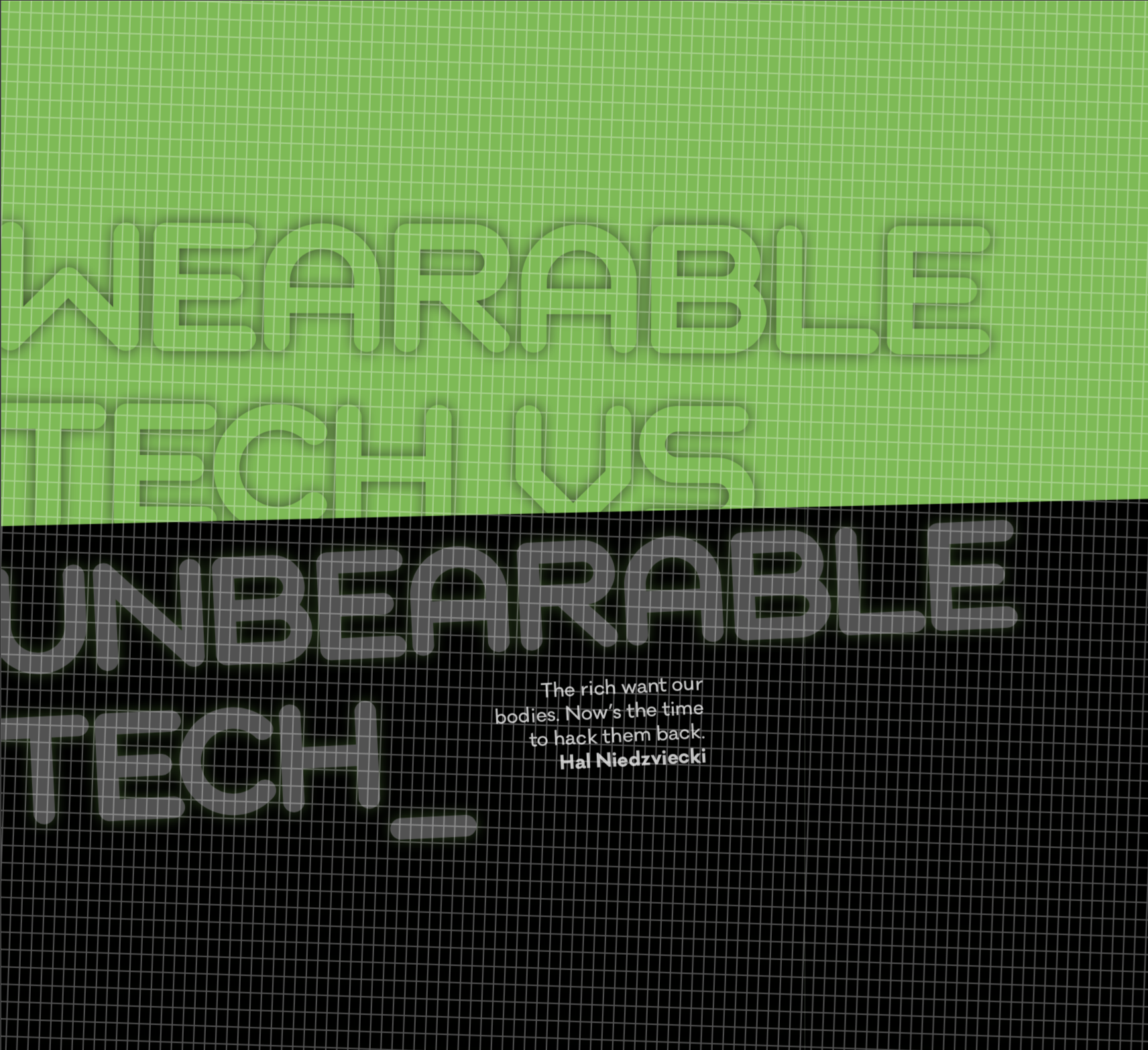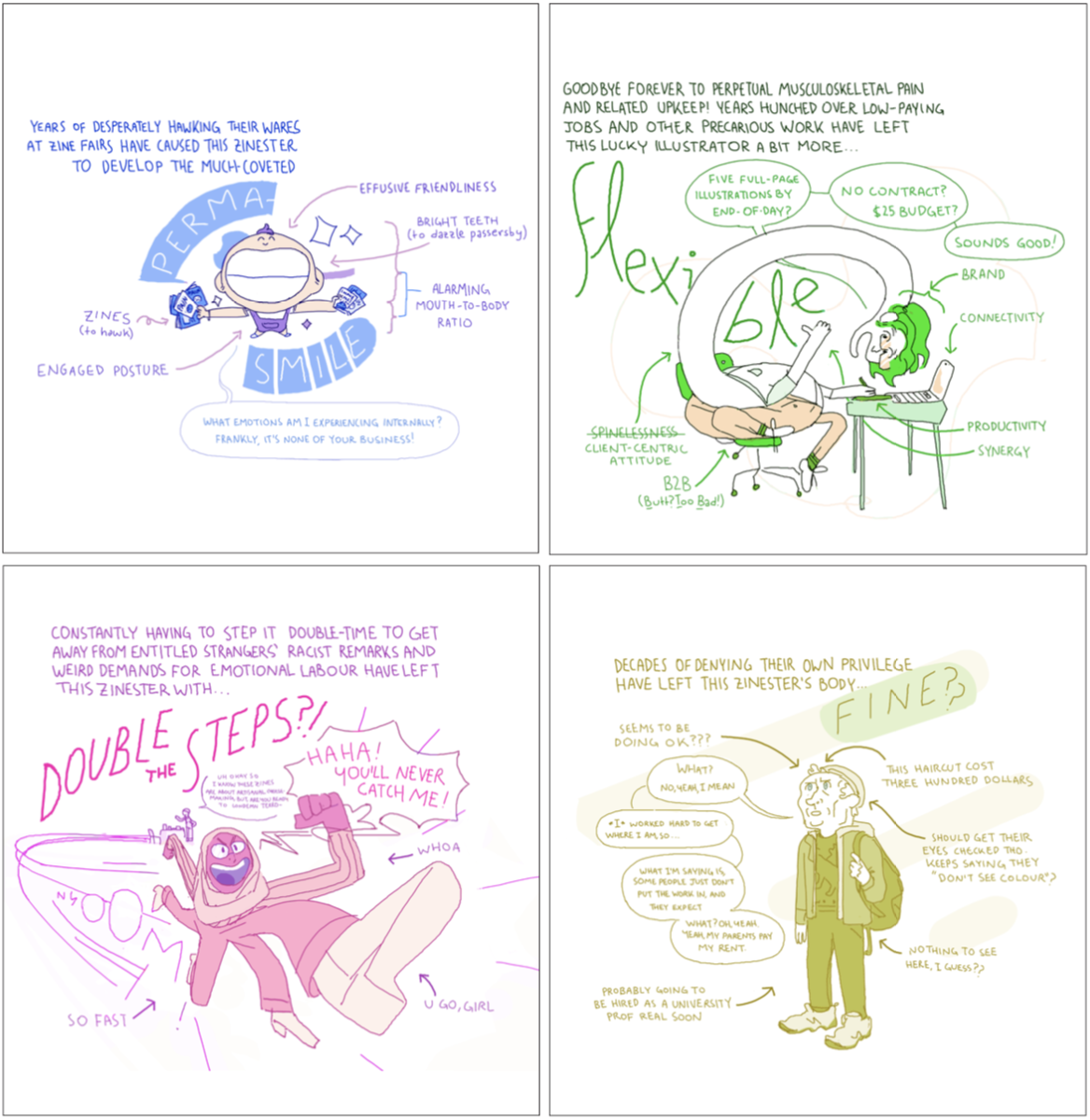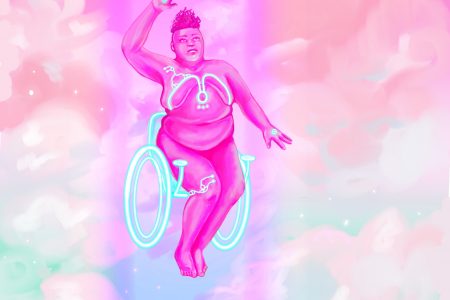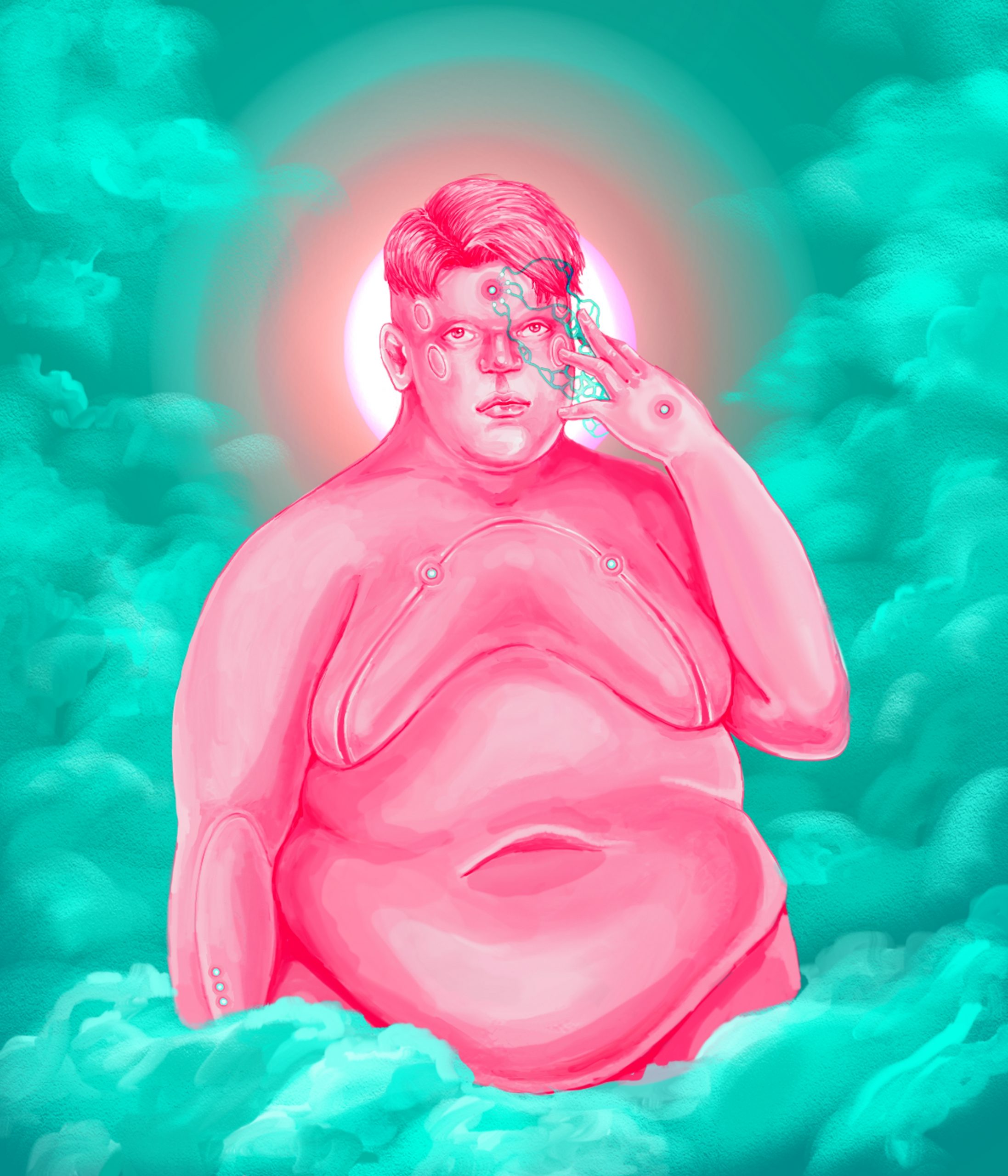
In the age of COVID-19, our bodies have never been more hidden, fortressed behind walls and windows, cloaked behind face masks and that (in)famous acronym PPE. Disappointing and disappearing, physical bodies have become our psychic captors, mortified hosts for the things that we fear are imminent, or, often, already arrived — disease, disability, detention, decay.
In contrast, our virtual bodies are displayed everywhere: cast on every screen, imagined in every herd immunity pie chart, preserved in every Instagram post depicting home exercise routines. It’s the neoliberal dream: fully automated and digitized capitalism. Dispense with the flesh, extend your presence into the cybersphere, maximize your influence and live that Second Life as if it was your first, only and best.
And yet, 2020 has given the body an unexpected moment. The body, that undeniably extant corporeal vessel, surrounds us sight and spirit. Bodies flood into hospitals, bodies line up for groceries, bodies seek shelter, bodies seek exercise and fresh air, bodies yearn for physical companionship from other bodies. Bodies, bodies everywhere! Bodies destroyed or defended by systems of power. Black and brown bodies have again staked space in the forefront of our conversation — disproportionately poor, disproportionately affected by COVID-19, disproportionately targeted and even murdered simply for daring to exist and take up space. Bodies senselessly rendered senseless in moments that ought to be mundane — while jogging, bird watching, reading or sleeping in a car.
For the logic of neoliberalism, a (re)emerging worldwide focus on the body is a potential problem: The body must be kept alive (for the time being). But the innate fragility of the body cannot be permitted to compromise the intimately related project of total virtualization and endless economic growth.
So we reach this paradoxical moment. Bodies are more prominent than ever, their banal needs suddenly magnified by a pandemic thus revealing and exacerbating the inequities of the neoliberal project. We’re at a point where more and more people are fearlessly using their bodies to fill the streets and fight — exhausted bodies with not much left to lose. At the same time, the forces of neoliberalism have never been more bent on replacing each of our bodies with an easily controlled and far less demanding virtual copy of itself (or as much as they can). The more we Zoom, tweet, FaceTime, Animal Jam and shop online, the more our physical bodies effectively cease — forgotten in favour of screens. All was going according to plan until recently. An invisible, tiny body — a virus — has offered us the opportunity we need to defy what seemed inevitable, one last chance to body-hack our way to liberty and the lives we want. The body is back, but how can we be sure it’s here to stay?
Cyborgs walk among us
For years I’ve had an aversion to body art, where people contort, mark, and sometimes mutilate themselves on a stage or video to make an aesthetic and political point. I’ve encountered many variations — bizarre operations meant to demonstrate the toxic male gaze, people implanting nodes in themselves just to feel the electric currents, barcode tattoos subtly criticizing the Chinese government, and literal metal mohawks because, well, punk is forever. I appreciate the commitment and sentiment, but like many, I can’t get past how mawkish they are, with any potential nuance pushed out by the grotesque means of expression.
But lately, I’ve been re-thinking the gut reactions I’ve had for decades around body modification. In 2001, I teamed up with Steve Mann to assist him in writing his manifesto — Cyborg: Digital Destiny and Human Possibility in the Age of the Wearable Computer. At the time, very few people realized how deeply tech companies would come to mediate our lives. But Mann, a Hamilton, Ontario-born professor of Computer Engineering at the University of Toronto and perhaps the first true cyborg, was one of them.
When I met Mann, he’d already been obsessed with countering corporate technology for decades. To accomplish this goal, he’d built and been wearing a glasses-like technology that prefigured the likes of Google Glass. Today he calls it the EyeTap, a computer screen mounted onto his face and broadcasted directly into the eye via laser technology, controlled by a 3-button device stored covertly in his pocket.
Mann classifies himself primarily as an inventor, but I’d also say he is a career body artist. The man-machine has the world as his stage, always observing the reactions his performance elicits — fear, anger, revulsion, fascination and, lately and most troublingly, decreasing interest. Mann is a walking artist statement, and each new audience is an opportunity to promote the message he embodies. Mann believes that everyone should have abilities like those given to him by his device. For him, the EyeTap’s capacity to record and store our every action and movement can fundamentally enhance our imperfect eyes and memory, allowing for detailed minute-by-minute playback. Or it can act as a personal world eraser, eliminating visual pollution by covering ugly and intrusive ads and billboards with pictures of famous works of art or, better yet, your toddler.
It’s his own version of the ethic driving the biohacking movement, which today is much more expansive than when I met Mann. If we intervene in how the body receives, acts, and reacts in a hostile world, we regain control over how it is treated by that world, too. While Silicon Valley wants us to abandon the body, people like Mann believe what we need is to build tools that take back the fate of our bodies. The totalitarian reach of government and corporate surveillance is intensifying all around us, marketed as beneficial under guises like contact tracing or anti-terrorism. Silicon Valley and increasingly compliant governments pitch an overwhelming but enticing package of forevers — live forever, play forever, shop forever. Steve Mann, the Luddite cyborg inventor, suggests a different direction.
The body mod picnic
In 2006, I was tapped by CBC Radio to host a show called Subcultures. The idea: We would travel around the country and immerse ourselves in the worlds of everyone from furries to urban explorers to body modifiers. For one story, I found myself sweating in a hot, cramped second-floor tattoo studio watching a man get his skin seared. The tattooist anaesthetized an area with a topical cream, then placed his cauterizing tool over the spot. The young man gasped as smoke carrying the stench of burning skin wafted and the sizzle was artfully captured by the sensitive mic of our sound tech. The branding slowly generated a raised scar in the shape of a tree across his whole back. I looked on, more than a little horrified by what I was witnessing, and yet fascinated by a procedure that was clearly more ritual than clinical for both parties.
Afewdayslater, I attended a body mod picnic. The crowd of about a hundred was a living gallery of aesthetic bodily interventions ranging from mild to wild. There were several people with horns. I met a fellow who had inserted magnets in his fingertips to feel the electric currents. Tails were evident. A topless woman with a shaved head circled through her peers, showing off an elaborate chest tattoo. Tongue piercings flashed in the sunlight, though many present had gone farther and had their tongues split, lizard-like. It took some prodding, beer drinking, and befriending, but we were eventually introduced to a self-described eunuch who had arranged for his own castration. Not wanting to expose his collaborators to possible legal repercussions, he declined to spill the details. Maybe his reservations were because we were press, but it’s likely he also noticed I have no tattoos or piercings myself. Frankly, I cringe at the prospect of needles and blood. When the producers of Subcultures suggested I get truly embedded by getting a piercing embedded in my nipple while on the radio, I just about fainted. Nice try, but no.
Still, what these heavily decorated individuals were doing wasn’t entirely a mystery to me. I had already been writing a lot about how pop subcultures were getting more intense as more traditional forms of community centered around family life, religious observation and the cycles of nature waned, broke down or otherwise frayed. I situated serious body modders as adherents to the cult of their own uniqueness. Even in the relatively early days of the digital age, we all wanted to be special — still do. The more we transform our bodies, the more special we each are, right? Most other pop-inspired subcultures of the time sought to bury the body in costumes and empty rituals cribbed from one TV fandom or another. Group-bonding meant dressing up as Vulcans and hand-signing “live long and prosper.” But the body mod sects (which persist today — just look at the boom in DIY tattooing) were different. Extreme reshaping and cyborgian interventions calls attention to a person’s body rather than repackaging it.
Irreversibly changing one’s body today reminds us to bravely refuse to abandon it for the digital ether. Body modders, like Steve Mann, situate the body itself as the site of a do-it-yourself rebellion
— against fear, against conformity, against the prevailing sentiment that illness, disability and even death are unnatural horrors to be hidden in shame. This brings us to a crucial truth: when we allow our bodies to be usurped by third party-owned technology peddling those myths, we quickly start to lose sight of the soul, too. But resistance is surprisingly simple: call attention to the body. Make your own body. Fat and skinny, sick and healthy, young or old — your body is not a problem waiting for a fix.
WHEN WE ALLOW OUR BODIES TO BE USURPED BY THIRD PARTY- OWNED TECHNOLOGY PEDDLING THOSE MYTHS, WE QUICKLY START TO LOSE SIGHT OF THE SOUL, TOO
Again(st) the body
But the techno gods who peddle digital bodies won’t — can’t — relent. “Over time I think we will probably see a closer merger of biological intelligence and digital intelligence,” Elon Musk crowed to a rapt audience at the 2017 World Government Summit in Dubai. “It’s mostly about the bandwidth, the speed of the connection between your brain and the digital version of yourself, particularly output.”
Lawmakers’ belated doubts about big tech’s power, best performed in the clumsy questioning following Mark Zuckerberg’s congressional testimony, vanished upon the arrival of COVID-19. Now, state offices at every level cheerily comply with Silicon Valley’s plan to mummify us. New York Governor Andrew Cuomo, for instance, recently enlisted former Google CEO Eric Schmidt to lead a commission for “reimagining” the state’s operations in the wake of the pandemic. What’s on the docket? Virtual “democracy,” distance learning, online healthcare and, most essentially, high-speed Internet access for all. In other words, the state just sold out the few places that still required bodily presence: voting sites, schools, hospitals, libraries, town halls. Facing the reality of extended quarantine, government forces once seeking to put the brakes on tech megaliths suddenly handed them the keys and thanked them for saving us. But as Jacob Silverman grieves in a stunned May commentary for The New Republic, “eliminating the human is indeed Silicon Valley’s golden dream, not eliminating inequality.” As if to illustrate this bottom line: when Elon Musk reopened his California Tesla factory in flagrant defiance of health officials’ orders, Alameda County sheepishly tweeted that they’d make an exception in this case. A month later, multiple cases of COVID-19 were confirmed among the factory’s workers. But surely the bodies of workers are worth sacrificing for more self-driving luxury cars.
Musk’s temper tantrum represents a collision — the so-called age of disruption smashing into the sudden reappearance of the body’s resurgent, inconvenient needs. What happens next can go Musk’s way. Or it can mark the end; the end of the dream of singularity, of the corporate fantasy where digitized bodies are as easily packaged and tracked as an Amazon order.
We might still concede that it’s worth forgetting all this flesh for a shiny pixel imitation. Determined screens condition us to avoid seeing, touching, hearing each other. Consider the pre-COVID spectacle of a crammed subway car, each rider keeping their eyes down and mouths shut, their bodies tense and twisted to avoid physical contact. Contrast this with a COVID-age scene: the sepulchral gazes of our elders, inmates in their care homes confined to staring at their loved ones through locked windows. They mouth tender, intimate refusals as they lay hands on the glass, fogging it up. Bodies seeing bodies.



